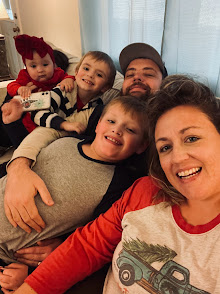Diversity, Equity, and Inclusion as a Student Clinician
Diversity, Equity, and Inclusion
as a student clinician in a SNF
During my clinical practicum at the SNF, I experienced diversity through areas such as gender, age, education, religion and disability. The majority of the staff and residents in the current facility are Caucasian and English speaking like me, but there are many differences that set us all apart.
Those differences are often the disabilities that are presented. Each and every patient that is admitted into the SNF presents with unique diagnoses, symptoms, or challenges. I have encountered patients with diabetes, stroke, cardiovascular disease, COPD, dementia, aphasia, dysarthria, GERD, and hearing loss. I have worked diligently to ensure residents of the facility feel they are provided equity and inclusion by considering cultural aspects.
I have a few patients who are hard of hearing (HOH), one of which uses amplification (hearing aid). This patient does not always wear or want to wear his hearing aids when interacting with staff and other residents. It is the patient's choice to use assistive technology or not. It is my role as an SLP to offer use of amplification and assist with application if warranted but it is not my role to develop a bias regarding this situation.
Another example in the SNF setting is that it is common for staff to increase volume in this setting due to the large number of patients with hearing impairment. We have to be careful to not pose implicit bias so that we do not inappropriately increase volume to patients that are sensitive to loud noise. I have one patient who is great auditory input and even talking in a normal speaking voice, she may request for staff to decrease volume. This example shows that not all people in a nursing home are hearing impaired and should be given the same care with different needs.
It is typical for scenarios to be presented like this in any setting. Sometimes it seems as we speculate stereotypes just by being in a particular environment or with a specific population without regard to the broad variety of reasons someone may be living in this type of environment. It is important for clinicians to consider diversity with all patients in order for ALL patients to feel accepted, valued, and respected. Not all people in a SNF are disabled in the same way.
The self-assessment Cultural Competence Checklist for personal reflection is a good way for clinicians to heighten awareness of how we view patients from culturally and linguistically diverse populations. Particularly from this assessment, I took away that even though individuals are living in a SNF they may have cultural norms that influence communication such as interpersonal space. In a SNF these individuals are constantly being touched, poked, and situated by medical and therapy professionals. It is important that we consider patient values and culture before jumping in to "assist". I know as a mother of 3, I am often "touched out," someone is always climbing, sitting, or touching me. It can be exhausting; I can see how personal space could be important to patients in a SNF too, whether it be a factor of cultural diversity or other reasons. This reflection will help me to be more conscious about interactions with clients in the future.
This video Don't Put People in Boxes put diversity and how similar people are in perspective for me. It brought tears to my eyes watching people step forward and come together as different stereotypes were named off. No matter who we are as individuals we are all children of God and should all be given the same opportunities in life and be socially accepted by all.
Blogroll
Darla Gardner's blog provides helpful information for speech-language pathologists in various settings.
Rebecca Reinking's blog shares information specific to speech sound disorders (SSD).
The Gift of Gab is a blog by Jessica, where she gives tips, tricks, and strategies to focus on teaching.
B The Impact blog created by Alexandra Barrera to empower disadvantaged youth to achieve goals and success.
The Little Lady Bug Shop blog by Jacqueline Ortiz discusses ways to celebrate culture and diversity in the school setting and why it's important.









Comments
Post a Comment